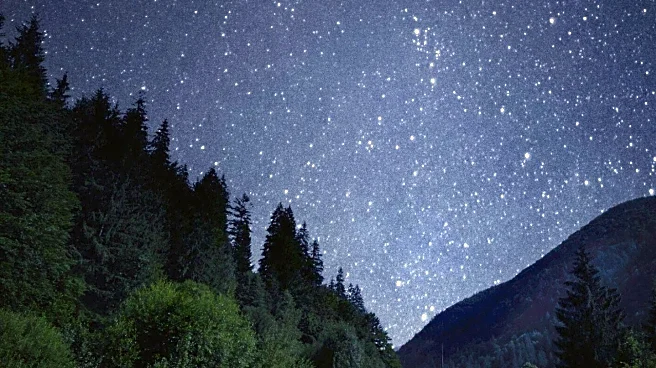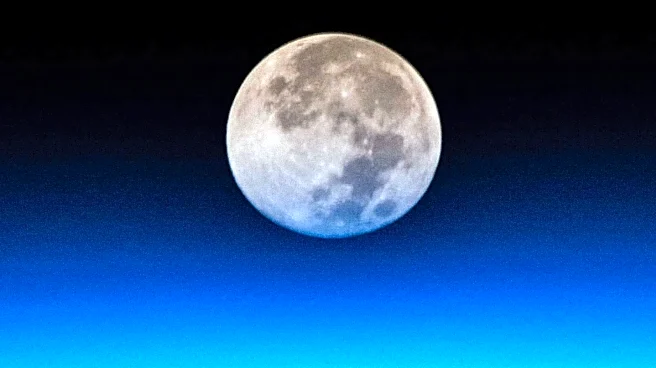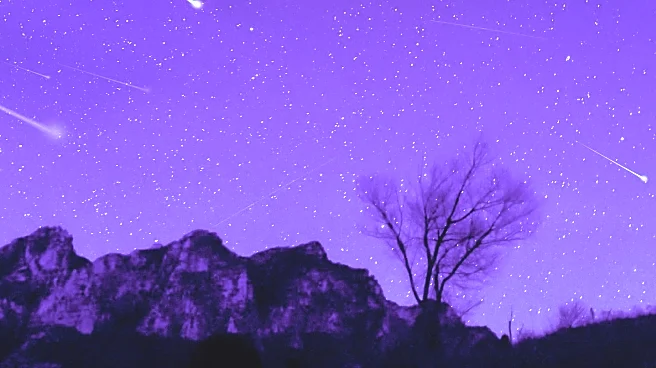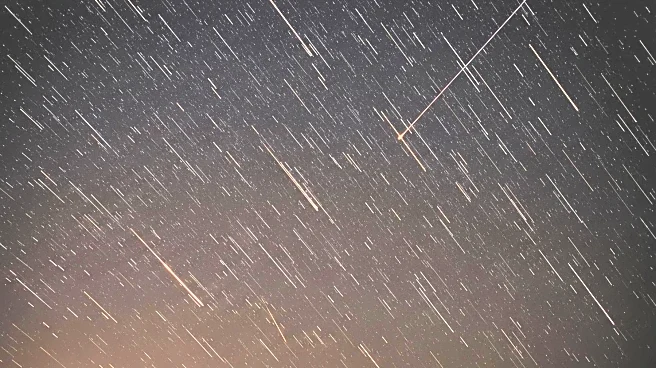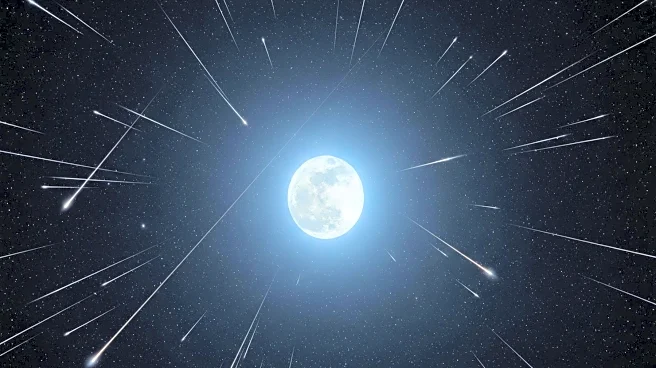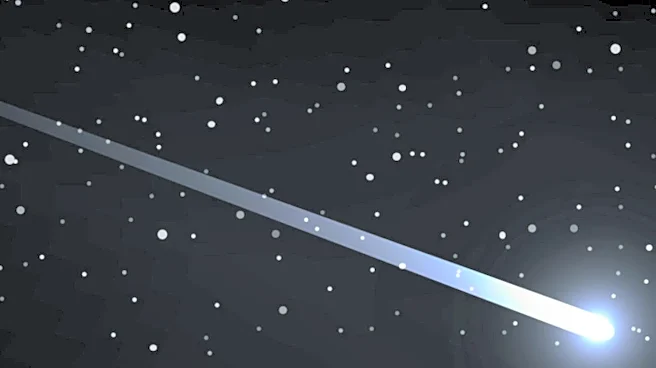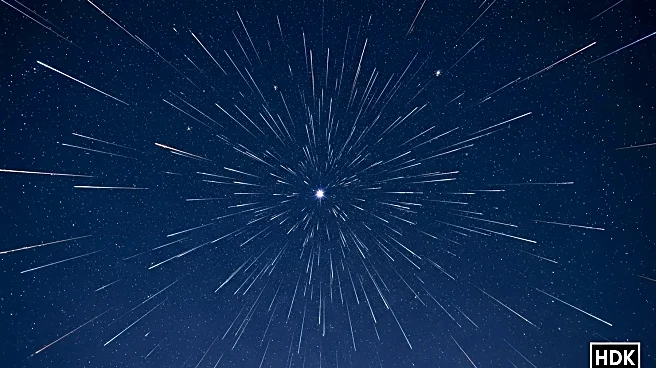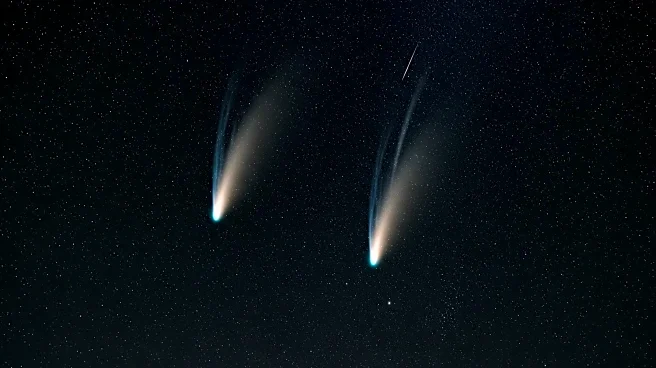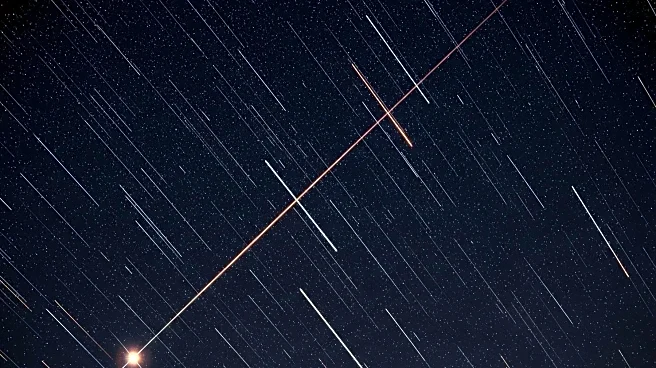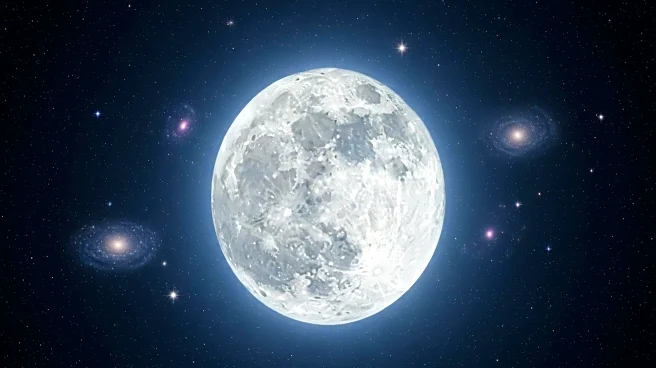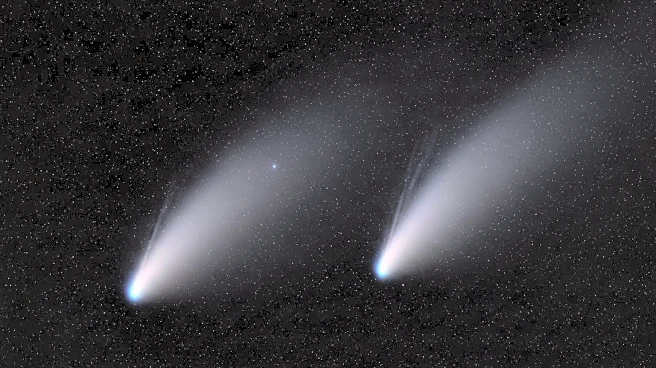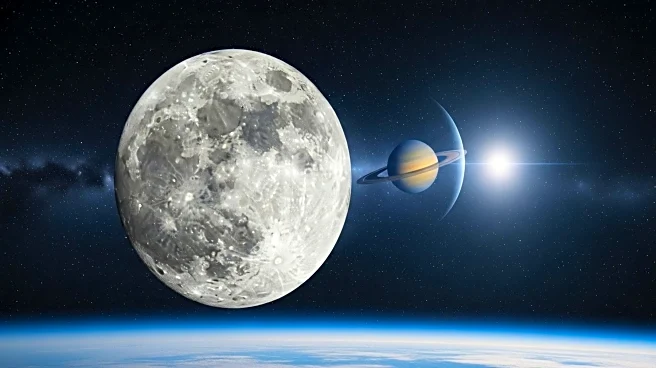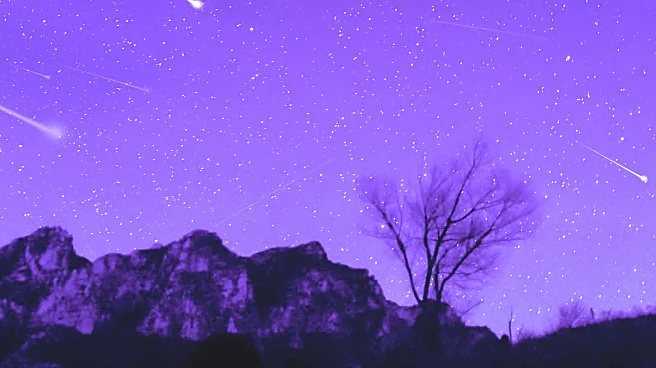What is the story about?
What's Happening?
This October, skywatchers are in for a treat with two meteor showers lighting up the night sky. The Draconids meteor shower is expected to peak between October 6 and 10, with the best viewing conditions occurring on October 8. This shower is a result of Earth passing through the debris trail left by the comet 21P/Giacobini-Zinner. Although the Draconids are typically faint, there have been instances of hundreds of meteors per hour. Later in the month, the Orionids meteor shower will peak on October 21, offering up to 20 meteors per hour. These meteors originate from the debris of Halley's Comet, and the shower is praised by NASA as one of the most beautiful of the year.
Why It's Important?
Meteor showers like the Draconids and Orionids provide a unique opportunity for both amateur and professional astronomers to observe celestial phenomena. These events not only offer a spectacular visual display but also contribute to scientific understanding of cometary debris and its interaction with Earth's atmosphere. The showers are accessible to a wide audience, encouraging public interest in astronomy and science. Additionally, they offer educational opportunities for schools and science centers to engage with the public about space and the solar system.
What's Next?
As the Draconids and Orionids approach, enthusiasts are advised to find viewing locations away from city lights to maximize visibility. The Draconids are best viewed in the early evening, while the Orionids are optimal in the pre-dawn hours. Observers should prepare for varying meteor rates, as these can fluctuate based on the density of the debris field Earth encounters. The presence of a bright moon may affect visibility, particularly for the Draconids, so timing and location will be key for optimal viewing.
AI Generated Content
Do you find this article useful?
